Parameterization of non-orographic gravity waves in large-scale models: Formalism, impact and test against direct observations
The parameterization of non-orographic gravity waves breaking in the atmospheric component of the large scale Coupled Model developed at IPSL for the 6th IPCC assessment report (IPSLCM6 ) will be reviewed. For the gravity waves emitted by front it will be shown that the GW sources can be derived from spontaneous adjustment theory, providing that the sources are placed at multiple altitudes in the troposphere and lower stratosphere. The representation of gravity waves issued from convection is derived from a much simpler theory, where the variability of the latent heating due to convection is distributed over a large ensemble of spatio-temporal harmonics each harmonic forcing the corresponding waves. In these two different schemes, the large ensemble of waves needed is realised by stochastic methods. The parameterizations are shown to reduce systematic errors, for instance on the quasi-biennal oscillation in the tropical stratosphere. In this respect careful diagnostics are also made of the large scale equatorial waves, and to verify that the parameterizations are not spuriously balancing errors on element of dynamics that should be explicitly solved by the model. Finally, direct comparison with constant level balloon flights done in November 2019-February 2020 and in the lower tropical stratosphere during the strateole-2 campaign are made. The atmospheric conditions under the balloons location at each time are derived from the ERA5 reanalysis and used to activate the non-orographic gravity waves schemes. We show that the momentum fluxes predicted by the schemes compare well with the observed values, and with highly significant correlations between the day-to-day variabilities. The correlations obtained are for the operational values of the non-dimensional “tuning” parameters of the schemes, and have values that could be well improved, regarding the number of degrees of freedom present in the dataset.











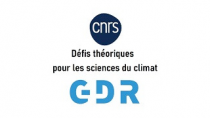
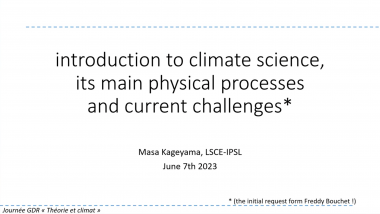
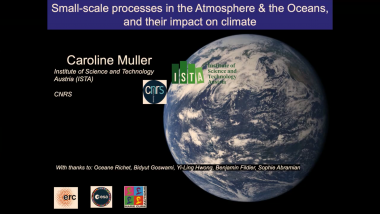
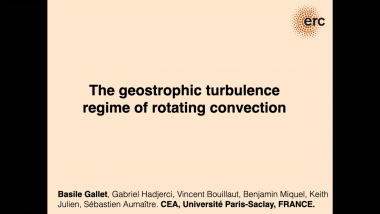
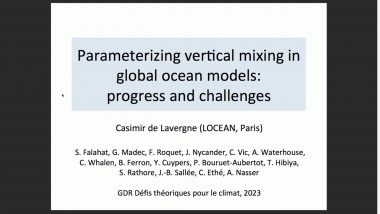
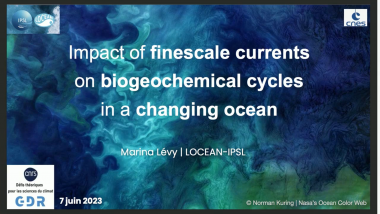
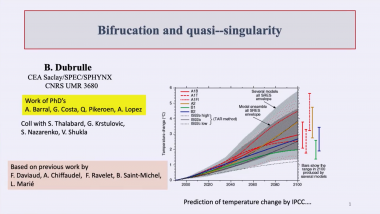
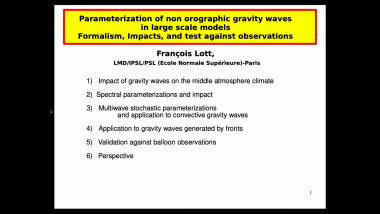
![[1245] Model theory, differential algebra and functional transcendence](/media/cache/video_light/uploads/video/SeminaireBourbaki.jpg)
